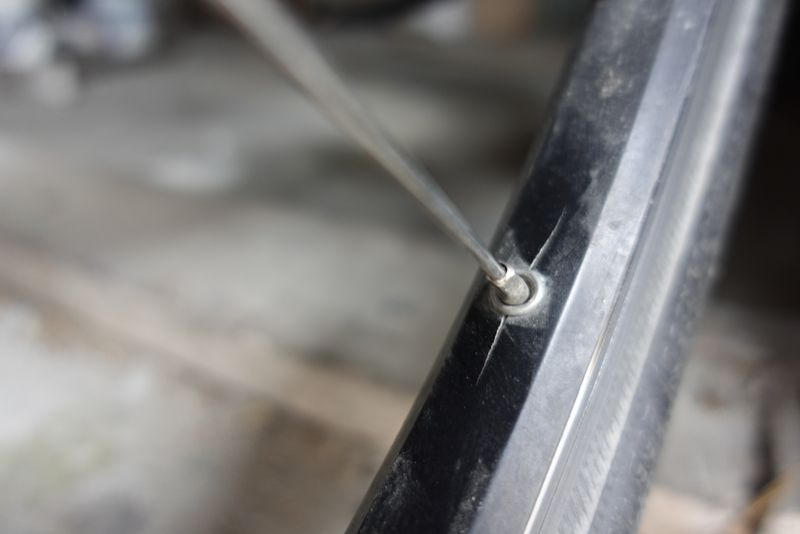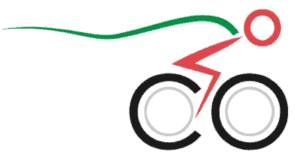If you think about it, bicycle spokes are truly ingenuous. They each weigh next to nothing and yet they bear all of your weight and make sure that your wheel turns around. All the force you apply to the pedals and to the brakes goes through the spokes. They often don’t get enough credit, but they are very important.
There are 32 spokes on the average bicycle wheel. The numbers can be as few as 16 or as many as 48. Less spokes result a marginally better aerodynamic advantage, while more spokes mean a stronger wheel. Bikes intended for racing typically have a low spoke count while bikes built to bear a lot of weight come with a high spoke count.
Each spoke in itself is a thin and light piece of steel, but when it’s connected to the wheel and the hub and is tensioned correctly, provides enough force to hold the rider’s weight.
The average spoke weight is 14 grams, but some special spokes intended for racing can weigh as little as 3 grams. The weight savings aren’t very significant for the average rider, but they make a marginal difference in races and can mean saving a few seconds, which can make or brake a first place.
Electric bikes built for everything and priced for everyone. Shop Rad Power Bikes, America's #1 electric bike brand. Get out. Go further. Ride Rad.
In order to keep the wheel strong enough to support the weight of the rider, but to keep the wheel weight down to a minimum, manufacturers often put less spokes on the front wheel than on the rear, which bears most of the weight.
Spoke counts on various types of bikes
| Bike type | Front wheel spoke count | Rear wheel spoke count |
| Road bike | 18 – 24 | 20 – 28 |
| Touring bike | 32 – 36 | 32 – 36 |
| Hybrid bike | 28 – 32 | 28 – 32 |
| Moutain bike | 28 – 32 | 28 – 32 |
| Gravel bike | 28 – 32 | 28 – 32 |
| Cyclocross bike | 22 – 28 | 24 – 28 |
| Fat bike | 32 | 32 |
| Tandem bike | 24 – 48 | 24 – 48 |
| City bike | 28 – 36 | 32 – 36 |
| Cargo bike | 32 – 36 | 32 – 36 |
| BMX bike | 32 – 36 | 32 – 36 |
Saving a few grams of weight and having a little aerodynamic advantage makes sense in a professional racing scenario or if someone is a weight weenie, but it doesn’t make a noticeable difference for most of us. Most people can sit on the same bike with two different sets of wheels with different spoke counts and not notice any difference at all.
Having a strong enough wheel, on the other hand is something everyone should care and worry about.
If you take a look at the above table you will see that the spoke count is greatly influenced by how much stress and weight the wheel is subject to. The more stress and more weight the more spokes in general.
Touring bikes, cargo bikes, city bikes, BMX’s and tandem bikes usually come with the highest spoke count. There are certain outliers among them too. For example, certain tandem bikes intended for road use, such as the Co-Motion Supremo, come with a low spoke count, but they are the exception to the rule .

A higher spoke count means more connection points between the rim and the hub, which leads to better weight distribution among the spokes. This is true for both the weight of the rider and cargo, as well as stress coming from the road, such as a bump or a pothole. Having more spokes means that the energy is absorbed by more stress points, and each spoke is less likely to be over-stressed to the point of failure.
Each bike and wheel manufacturer specifies the maximum weight the bicycle can handle, but generally speaking, bikes that come with higher spoke count wheels are designed for heavier riders. Touring bikes, for example, are excellent bikes for heavy people. While many road bikes have 24 spoke wheels or less, and max out at 125 kgs (275 lbs) including bike, rider and cargo, touring bikes, which often come with 36 spoke wheels can often take riders as heavy as heavy as 136 kg (300 lbs) not including cargo.
How should you decide how many spokes you need on your next bike?
If you’re into bike racing or you care very much about how your bike looks a low spoke count such as 18 or 20 sounds very appealing. In this case you need to make sure that you are not an exceptionally heavy rider. It is going to give you a marginally faster, and a somewhat better looking bicycle which comes at the cost of a less sturdy wheel.
99.999% of people won’t notice any difference in terms of speed if they have a higher spoke count. Unless this is so dear to you that you’re willing to go with a weaker wheel, you should always go for a higher spoke count.

When it comes to utility and hobby cycling, a good rule of thumb is that the more spokes the better. Here we’re not going for aesthetics, but for durability and functionality. This is especially true if you’re a heavy rider pushing the limits of the bicycle or if you don’t fancy dealing with a broken spoke on your bike.
Here are my recommended spoke counts for beginner riders:
| Bike type | Front wheel spoke count | Rear wheel spoke count |
| Road bike | 24 | 28 |
| Touring bike | 36 | 36 |
| Hybrid bike | 32 | 32 |
| Moutain bike | 32 | 32 |
| Gravel bike | 32 | 32 |
| Cyclocross bike | 28 | 28 |
| Fat bike | 32 | 32 |
| Tandem bike | 48 | 48 |
| City bike | 36 | 36 |
| Cargo bike | 36 | 36 |
| BMX bike | 36 | 36 |
More important than the spoke count: spoke tension
The spoke count is only one part of the equation. The other, equally important part, or even arguably more important one than the number of spokes, is the spoke tension.
Spokes are made of steel and they are very strong when it comes to hanging weight on them, but since they are thin and can bend very easily, they are not good at holding weight placed on them directly.
If the spokes of the bikes are loose, the wheel will collapse under the weight.
In order for a wheel to work right, the spokes need to be tensioned properly. The front wheel’s spokes need equal tensioning on both sides, while the rear spokes are asymmetrical, and therefore the spokes on the side of the cassette need to be tensioned twice as much as those on the other side.
When some of the spokes aren’t tensioned correctly (they aren’t tensioned to pull with an equal force), the wheel comes out of true and starts moving in a number 8-like fashion. In extreme cases, you can feel the bicycle moving under you like it has a limp.
Thankfully, spoke tension is quite easy to adjust with a spoke key, which is small and inexpensive and many multitools like this one from Crankbrothers include it too.
What happens if you have too few spokes?
If you choose a bike that doesn’t have sufficient spokes for the intended use, it will put too much strain on the spokes that it does have. This could lead to the spokes braking under stress or it can also lead to the rim starting to crack under the weight around the spoke holes.

If your weight is near the higher limit of the bicycle you want to purchase, and there are bikes with various spoke counts, opt for more spokes as it will almost always mean a stronger wheel, which will last a longer time.
Can you ride with a broken spoke?
As a rule of thumb, you can ride with a broken spoke, you may be able to ride with two broken spokes, but you should never ride with three broken spokes.
Once you have a broken spoke you should look for an opportunity to replace it: whether yourself at home or if you don’t feel confident, then at your local bike shop.
A new spoke is very cheap; it costs about $1-2. If you have it installed by your bike mechanic, the labor cost will be around $10-20 depending on where you live. Replacing an entire wheel is much more expensive.
2 easy tips to protect your spokes
Here are 2 easy ways to protect your bicycle spokes.
Scan the road ahead
By paying attention to the road ahead of you, especially when riding at high speeds you will notice hazardous objects and potholes in front of you much sooner. If you react in time, you can save yourself some headaches as well as a broken spoke.
Curbs, potholes, and cobbles are particularly stressful on the wheels, so go easy on them as much as you can.
Use wider tires
The wider your tires are the more air volume they have, which is of great help in absorbing the shocks coming from the road. Mountain bike tires are very durable not only because of the sturdy wheel and the high spoke count but also because of the massive air volume of the tires.
By putting the widest tires on your road bike that it can take whether it be a 28 mm or a 32 mm one, you’re going to end up with a more comfortable ride and you’re also protecting the spokes on bad quality roads.
